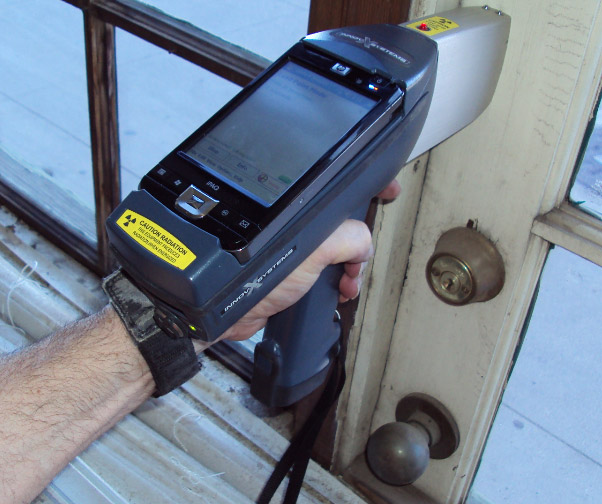Step-by-Step Process for Successful Lead Violation Removal
Following this, adherence to government and state guidelines is paramount to formulating an efficient remediation strategy. The real remediation calls for experienced personnel to apply these plans while strictly adhering to security methods. What happens after the removal is finished?

Detection and Assessment
Detection and assessment are important action in the removal of lead offenses. To guarantee a reliable remediation process, it is important to carry out an extensive evaluation of the setting where prospective lead exposure exists. The first phase of discovery involves determining sources of lead contamination, which can be discovered in paint, water pipelines, soil, and dirt. Using innovative diagnostic tools such as X-ray fluorescence (XRF) analyzers and atomic absorption spectroscopy (AAS) can supply precise dimensions of lead concentrations.
Once detection is achieved, an extensive analysis has to be taken on. This includes examining the level and severity of contamination, along with identifying populations at danger, especially youngsters and expectant women. Risk assessments often include sampling and laboratory analysis, environmental surveys, and health and wellness impact researches. The gathered data need to be carefully recorded to sustain the growth of an effective removal method (Lead Violation Removal in NYC).
In addition, it is vital to prioritize locations with the highest degree of contamination and those that pose the best health and wellness risks. Reliable communication with stakeholders, including building proprietors, homeowners, and public health authorities, is essential for guaranteeing that all celebrations are informed regarding the searchings for and the subsequent actions required for removal. This initial discovery and assessment stage prepares for an effective lead offense remediation process.

Legal and Regulative Compliance
Browsing the landscape of legal and governing compliance is a crucial element of successful lead infraction removal. Conformity makes sure not only the security of afflicted populaces however additionally the integrity and lawful standing of the company responsible for removal.
State and local laws can differ, usually enforcing additional commitments or more rigid criteria. Consequently, a detailed understanding of all appropriate legal structures is important. This includes meticulous documentation of all remediation activities to show conformity. Failure to follow these regulations can result in severe charges, including large penalties, lawsuit, and reputational damage.
Involving lawful professionals specialized in environmental regulation can help with navigating these intricacies. Normal training and qualification for all employees included in the remediation procedure are likewise obligatory to make sure adherence to safety and security and regulative standards. By prioritizing lawful and governing conformity, organizations can effectively mitigate dangers and attain an effective remediation outcome.
Preparation the Remediation
Properly planning the remediation of lead offenses starts with a thorough assessment of the infected site. This data-driven approach guarantees that removal initiatives are suitably targeted and reliable.
As soon as the contamination is mapped, a threat analysis should be carried out to review possible wellness dangers to humans and the environment. Lead Violation Removal in NYC. This analysis ought to think about aspects such as exposure pathways, population susceptability, and ecological impacts. The understandings collected will develop the basis for choosing a proper remediation method
Consequently, setting clear, achievable objectives for the remediation job is critical. These goals need to straighten with regulative requirements and stakeholder expectations to guarantee conformity and neighborhood acceptance. Establishing a thorough removal strategy that lays out techniques, timelines, and resource allocation will promote a structured method to the cleanup process.
Moreover, it is necessary to involve with stakeholders early and keep transparent communication throughout the planning phase. This includes notifying local neighborhoods, acquiring needed licenses, and coordinating with governing companies to guarantee all legal and procedural demands are satisfied. A well-crafted removal plan not only deals with the contamination properly but also builds trust fund and cooperation amongst all parties included.
Executing the Remediation
With a well-structured removal strategy in place, the focus moves to the real implementation of the remediation activities. This stage involves setting in motion the required resources, consisting of knowledgeable workers, specific devices, and high-grade materials. Begin by plainly marking roles and duties to make sure liability and seamless coordination among staff member.
This consists of setting up containment areas to prevent lead dust and particles from spreading, as well as using air filtration systems to maintain air find quality. Utilize methods such as wet scratching, chemical stripping, or encapsulation, depending on the severity and location of the contamination.
Throughout the removal process, conduct routine inspections and air quality checking to make certain compliance with regulatory requirements. Reliable communication with stakeholders, consisting of homeowner and owners, is vital to maintain them notified of development and any unexpected advancements. By carefully adhering to these steps, the remediation tasks can be executed successfully and efficiently, ultimately mitigating lead threats.
Post-Remediation Techniques
Post-remediation techniques play a crucial duty in making certain the long-term success of lead offense removal initiatives. These methods include continuous monitoring, upkeep, and neighborhood education and learning to stop future lead exposure and make sure a secure environment.
First, regular tracking is necessary. This involves regular testing of the previously affected areas to make certain that lead degrees stay within safe limitations. Homeowner must establish a timetable for these tests, ideally in collaboration with qualified ecological professionals.

Third, educating the community plays a crucial duty in maintaining the advantages of remediation. Locals and residential property managers must be educated about the risks of lead exposure and the finest practices for preserving a lead-safe setting. Workshops, informative handouts, and neighborhood conferences can be efficient devices for sharing this info.
Verdict
Successful lead infraction remediation calls for a thorough, reference systematic approach encompassing discovery and evaluation of contamination, adherence to legal and governing requirements, careful preparation, and effective execution of remediation initiatives. Post-remediation strategies, including continuous monitoring and neighborhood education and learning, are vital to maintain a lead-safe environment. Collaboration with ecological specialists ensures ongoing compliance and defense of public wellness. This systematic process emphasizes the significance of thoroughness and caution in addressing and mitigating lead contamination.